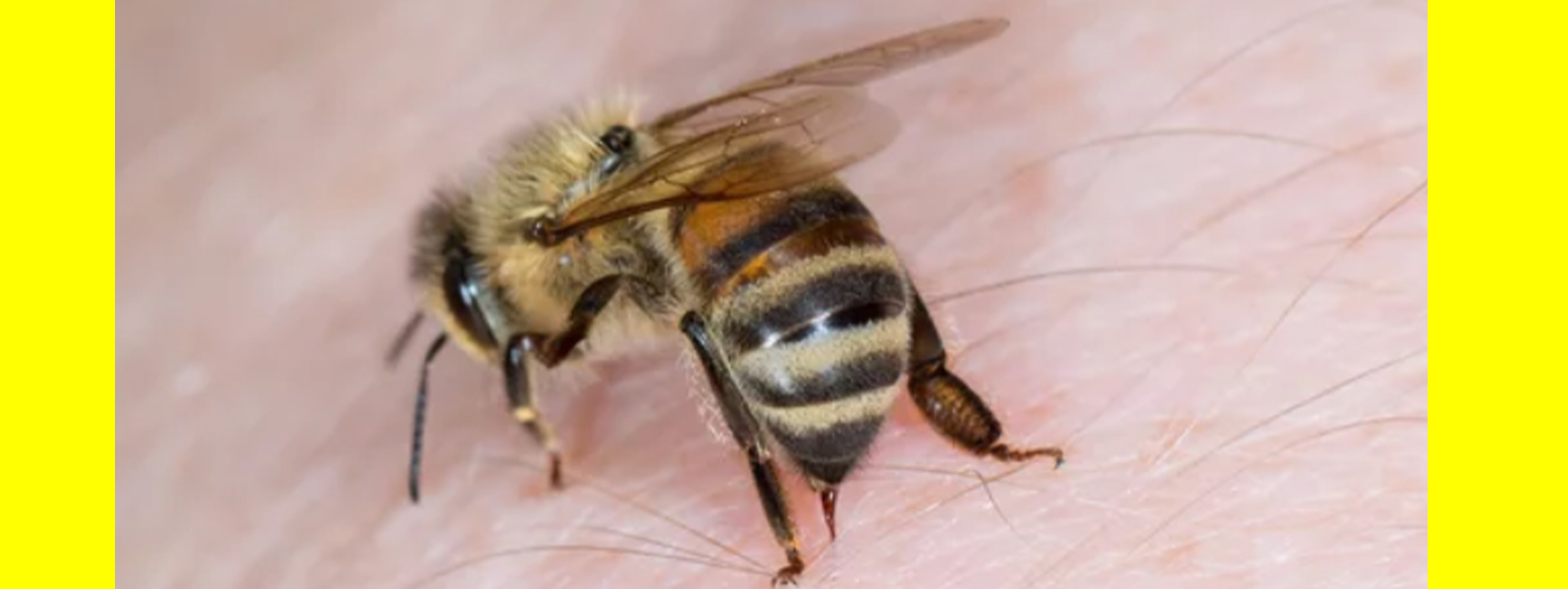Halifax Pest Control: Why Do Bee and Wasp Stings Hurt?

Compared to bites from mosquitos and most spiders, the stings of bees and wasps can really make you miserable. In some people, it can cause a severe allergic reaction requiring immediate medical attention. One way of preventing stings is to hire wasp removal in Halifax if you find a nest on your property.
What causes all the pain and swelling of a wasp or bee sting? It turns out that these insects’ defence systems are designed to incapacitate potential predators by forcing their own immune systems to work against them. Essentially, that is what is happening inside your body when a bee or wasp stings you and why it hurts so much.
How Does Bee Venom Effect the Body?
Bees and wasps have venom the same way that spiders do, but while spiders deliver their venom by biting, bees and wasps deliver it through the stingers in their abdomens. Wasps may use their venom in the same way that spiders do, to paralyze prey. For bees, however, stinging is entirely defensive. In fact, bees can only sting once because their stingers come out afterward, causing death because of the irreparable damage to their bodies.
Bee and wasp venom contains four chemicals, all of which can contribute to the misery of stings in different ways:
- Melittin
- Acetylcholine
- Histamines
- Pheromones
Melittin and acetylcholine stimulate the pain receptors in the nerves. These chemicals are the primary cause of the pain from a sting, which is usually a combined sensation of burning and itching but sometimes a dull ache as well.
Histamines trigger your body’s immune system, alerting it to a perceived threat of infection. The immune system reacts by trying to flush the chemicals out of the system by sending fluids to the affected area. That is the reason for the swelling that accompanies a sting.
Pheromones don’t directly contribute to your pain from the sting. Instead, they send a message to other bees or wasps in the area that mobilizes them to attack to protect the hive or nest. If you get stung by a bee or wasp, you should move away from the area as soon as possible, or you could receive more stings.
Some people are especially sensitive to the chemicals contained in bee and wasp venom. These people have more severe reactions to stings and may even go into anaphylactic shock, a potentially life-threatening medical emergency.
What Can You Do To Relieve the Pain?
To deal with the ordinary pain of a sting from a bee or wasp, the first thing you should do after you move out of the area is to check to see if the stinger is still sticking out of your skin. If so, you should try to remove it using your fingernails, tweezers, or the edge of a credit card. The serrated edge of the stinger can cause it to become lodged in your skin, where it can continue to deliver the venom into your bloodstream. However, if the stinger is completely underneath your skin, do not try to remove it. Once the stinger is out, wash the area with soap and water to prevent infection.
You can relieve the pain and swelling of a sting by applying a cold compress to the area. If this is not effective at calming the pain, you can take an over-the-counter pain reliever such as ibuprofen. Calamine lotion or hydrocortisone cream can help relieve the swelling and itching. An oral antihistamine can also help stop the itch. You can elevate a stung arm or leg to help relieve the swelling. Symptoms should only persist for a few hours.
Four Seasons Pest Control for Sting Prevention
Bees and wasps are most active during the spring and summer, but various pests may show up on your property at different times of the year. Truly Nolen offers Four Seasons pest control to protect your home throughout the year, inspecting and treating current infestations and preventing future ones. To find out more about how our teams help the residents and business owners of Halifax contact us today!